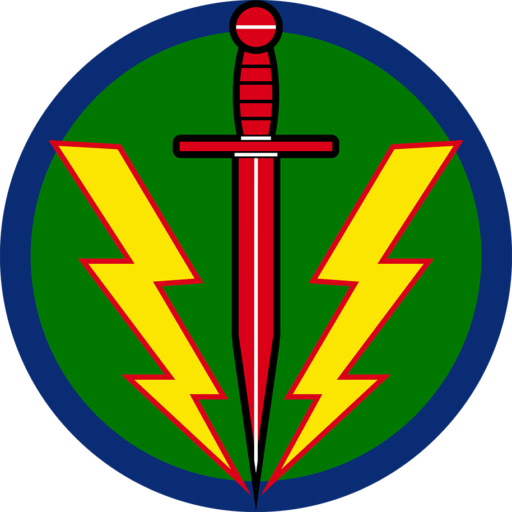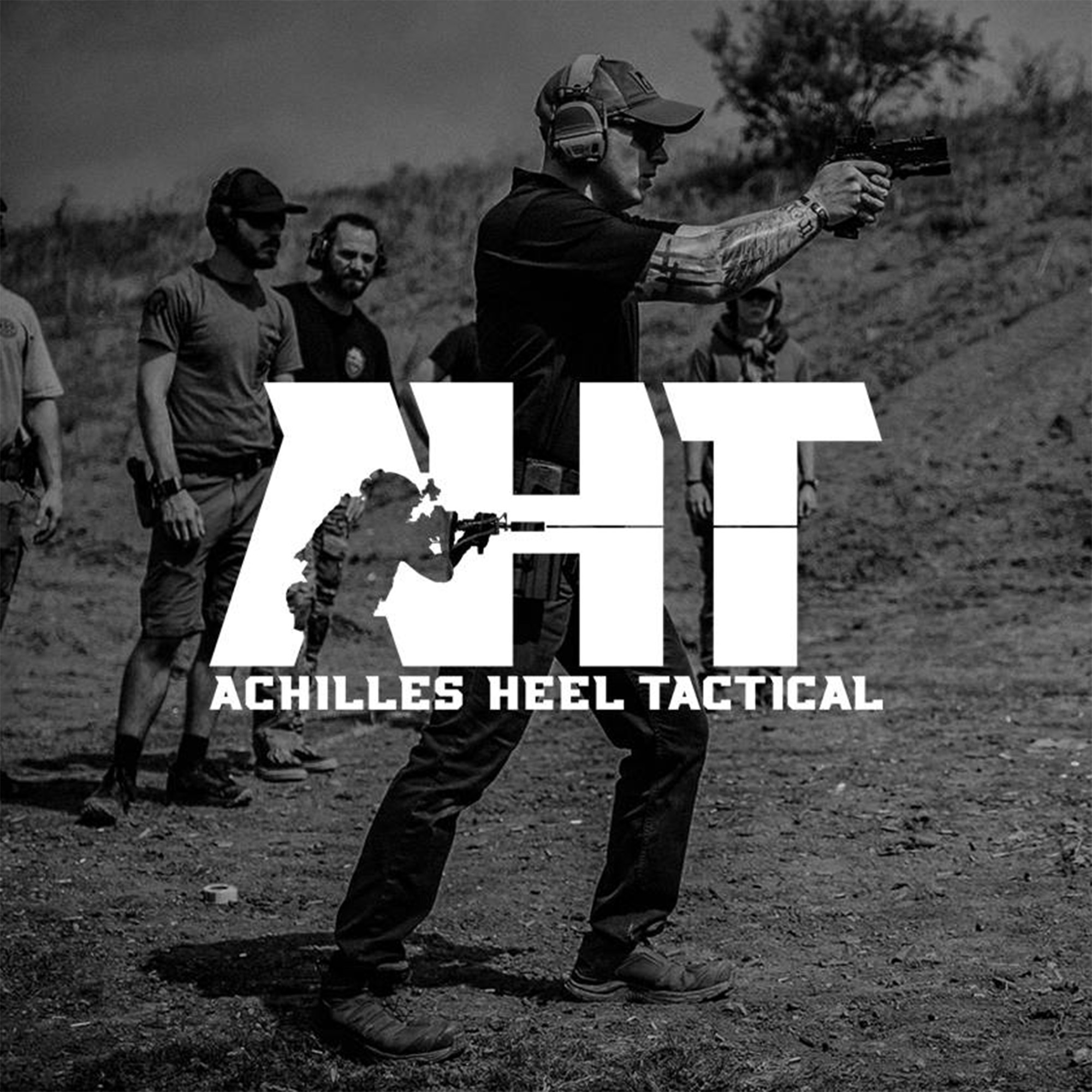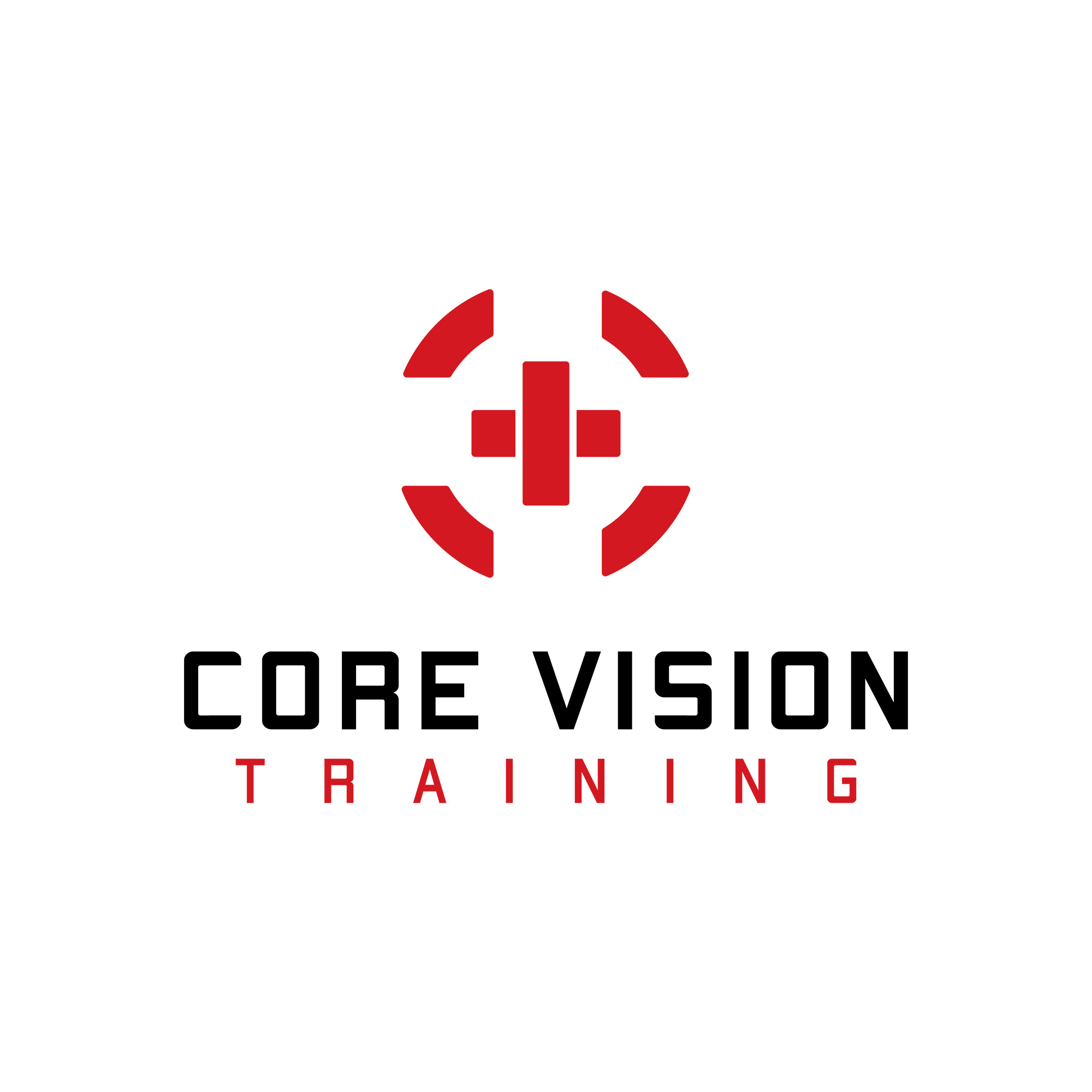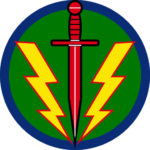TACOM HQ®
Command Results
CAGE 834B9 SAM GHMFLBP9GGM3
“If the enemy is in range, so are you." - Infantry Journal
Alpha TARAC®
About
TACOM HQ is the leader in innovative, firearm accessories, and renowned for its cutting-edge products designated to enhance the modern warfighter. We are the proud creators of the Alpha TARAC, a revolutionary prism that redefines shooter capabilities as an analog, bullet drop compensator.
At TACOM HQ, we idealize simplicity as it yields speed and effectiveness. It is for this reason the Alpha TARAC is the most highly sought after compensator for sale in the industry. It uniquely enables end users to harness max point-blank range (MPBR) or Speed Drop to rapidly engage intermediate-range targets.
Using MPBR (Recommended), the Alpha TARAC realizes fast hits without holdover, range estimation, or electronics within a prescribed range. Whether in the field, on a hunt, or at the range, firing solutions are uniquely based on a target size, so end users simply Aim Center® to get hits. The Alpha TARAC automatically compensates for bullet drop over distance via a prism that refracts light a precise optical offset. This offset is optimized so a bullet’s trajectory arc will not exceed the target’s vital radius, so it is a simple, point-and-click thought chain that works independent of duress, terrain, and environmental conditions like rain or fog.
Using Speed Drop (Advanced), the Alpha TARAC converts range into a precision MIL hold for a point of aim (POA) and point of impact (POI). For example, 450 and 600 yd targets, simply hold 4.5 or 6.0 MILs, respectively. Download PDF Cheat Sheet and User Guide for details. Created by Accuracy 1st, Speed Drop is a fast way to accurately deliver rounds at a known range, but it requires running, negative MIL value (dial past zero) or compensate with on-the-fly mental arithmetic. An inverted Alpha, a -Prism, fills this capability gap, and when in need to switch to a true mil hold, just stow the unit.
This analog, prismatic compensator is optimized to user specification. Thus, incorporating the Alpha into one’s kit eliminates the need for complex calculations or guesswork, especially on movers as far as intermediate distances, because one simply holds left or right versus in both x-y planes. The world is not flat with static targets at known 100-yd lines, so don’t train like they are. The Alpha enhances shooter performance, significantly increasing hit-rate probability in real-world scenarios, while decreasing time for exposure, as an add-on. Our bullet drop compensators are compatible with any firearm or optic, able to be ran ambidextrously frontwards or backwards, and engineered with the highest levels of durability and reliability in mind. Built to withstand harsh combat environment, every component, even our glass, is manufactured in the USA at MIL-SPEC with external AND internal saltwater resilience in case a seal fails unbeknownst to the end user. This makes them a preferred choice for any serious shooter.
When choosing TACOM HQ, you’re not just purchasing innovative, cutting-edge gear; you’re gaining access to an entire team committed to your success. Whether you’re a military combatant, law enforcement officer, professional shooter, or an 2A enthusiast, TACOM HQ offers the next level in rapid engagement embodying KISS (Keep It Stupid Simple). Contact us today to learn more about our products and how we can assist to unlock next-level proficiency.
Information Debrief
Basic
Need to Know
• Maximize hit-rate probability with the Alpha TARAC, an analog, prismatic bullet drop compensator. The Alpha uniquely optimizes bullet trajectory to harness max point-blank range (MPBR) or Speed Drop to engage intermediate-range targets. Simplify the thought chain to binary solutions per target size (MPBR) or range (Speed Drop). Nothing is faster or simpler as in the time spent thinking, the Alpha delivers rounds. Ideal for ballistic, bore offset, super/subsonic, and SIM compensation.
Eliminate
– Holdover
– Range estimation
– Milling
– Lasers
– IR emissions
– Batteries
– Software & code updates
Specs
• Dimensions:
L x W x D
2.30 x 2.50 x 1.60 In
59 x 64 x 41 mm
• Weight:
1.7 oz Base
1.7 oz Prism
0.7 oz Friction Assembly
0.6 oz Bolt-on or 1.3 oz Quick Detach
0.3 oz Anti-Reflective Device (optional)
• Prism Actuation:
+ 1.50-inch — Prism rotates just outside field of view (FOV) like a thermal clip-on with the added option to run flush to a handguard or rail riser, making it comparable to a tactical light. Lenses for 1.50″ model are cross-compatible.
+ 1.93 and 2.26-inch — Prism flips to center, collapsing onto itself for a minimal profile, yet remains partially visible to non-dominant eye to queue position. Lenses and bases for 1.98″/2.26″ models are cross-compatible.
Other Information
• Review import/export code(s) and requirements here.
4.1
1. Increased modularity; swap lenses and bases*
2. One Hundred Concepts universal HexCap™; run on both ends of the Alpha TARAC
3. Friction swivel mechanism
+ Precisely control stow position
+ Reduced weight; units weigh 4.5 – 4.8 oz (varies by model)
+ Salt water resilient; Nitride QPQ and 316SS external and internal componentry
+ Serviceable; dismantle for TLC as needed
4. TFE/P 80 Duro Buna Ring; no longer pops out
5. Price reduction
6. Enhanced Cheat Sheet / User Guide for components, assembly, and ballistic solutions
*See Specs for details
4.0
1. Upgraded pivot mechanism to a detent swing
+ Reduced footprint; uses 4 pic slots versus 9
+ Reduced weight; units weigh 5.4 – 5.8 oz (varies by model)
2. ARD compatibility; prevent lens glare
3. ADM manufacturing for high-quality finish
4. Optimized for a Max Point-Blank (MPB) methodology
3.0
1. Reduced weight; units weigh 5.8 – 6.3 oz
2. Eliminated potential for snag
3. Increased durability
+ Nickel plated steel lever and center support
+ Replaced roll pin pivot with heavy bolt
2.0
1. Availability of risers
2. New lever to reduce snag
3. Laser engravings
+ Ballistic QR code
+ Cheat sheet
1.0
1. Intro to the Second Zero® concept
2. ADM QD mount
3. 7075 Al locking handle
4. Tabs to actuate with gloves
MIL Report
“No holdover is necessary. Just flip it up and engage your target. The Alpha TARAC will increase a unit’s hit probability beyond 300m (Army Standard Qual Range) guaranteeing greater successful target engagements” – REDACTED
How it Works
How it works
• The Alpha TARAC® shifts the target image via patented, prism tech. The shift is a precise optical offset that installs a max point-blank range (MPBR) zero so the bullet’s trajectory will not exceed the target’s vital radius or Speed Drop function. Visually, it appears the point of aim is the same, but in actuality, it is a virtual image offsetted a precise ϴ.
• Engagements are broken into a split-second, binary solutions based on target size or range. For example, using MPBR, end users deploy for big targets or stow for small, 10″ or less targets inside 300-yds. Movers are a simple hold left or right as DOPE is automatically compensated, and in the time exposed to range estimate, mil, or laze a target, all affected by duress, a MPBR Alpha is sending rounds with an extremely high hit-rate probability. Apply this to a squad, and the effects are compounding. It is an inexpensive means to completely overwhelm a force, and is logistically the most stable solution in long-term conflict. Using speed drop, range equals your mil hold, so targets at 350 and 500 meters yield a 3.5 and 5.0 mil hold, respectively.
• Use the Alpha as a bullet drop compensator across optics, zeroes, munitions, and weapons with varying barrel lengths, boasting a high saturation potential. Scan the laser engraved QR code or download the Cheat Sheet.



Industry Zero
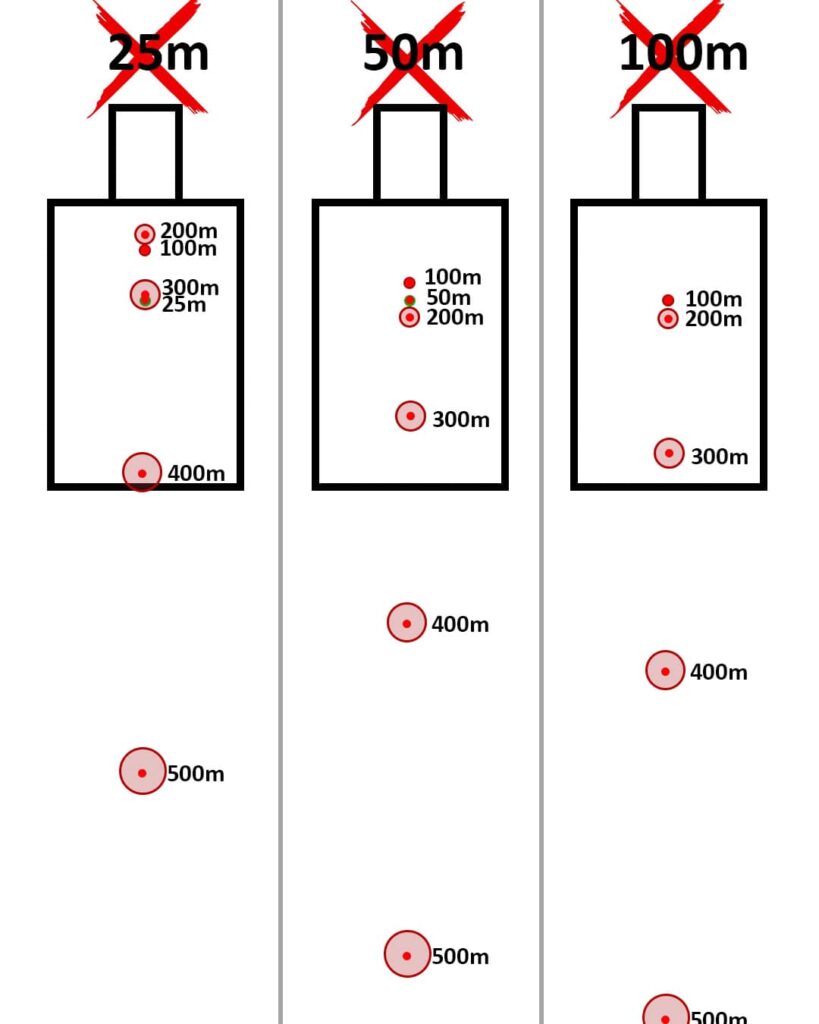
MPB Zero
*500m aim top TGT
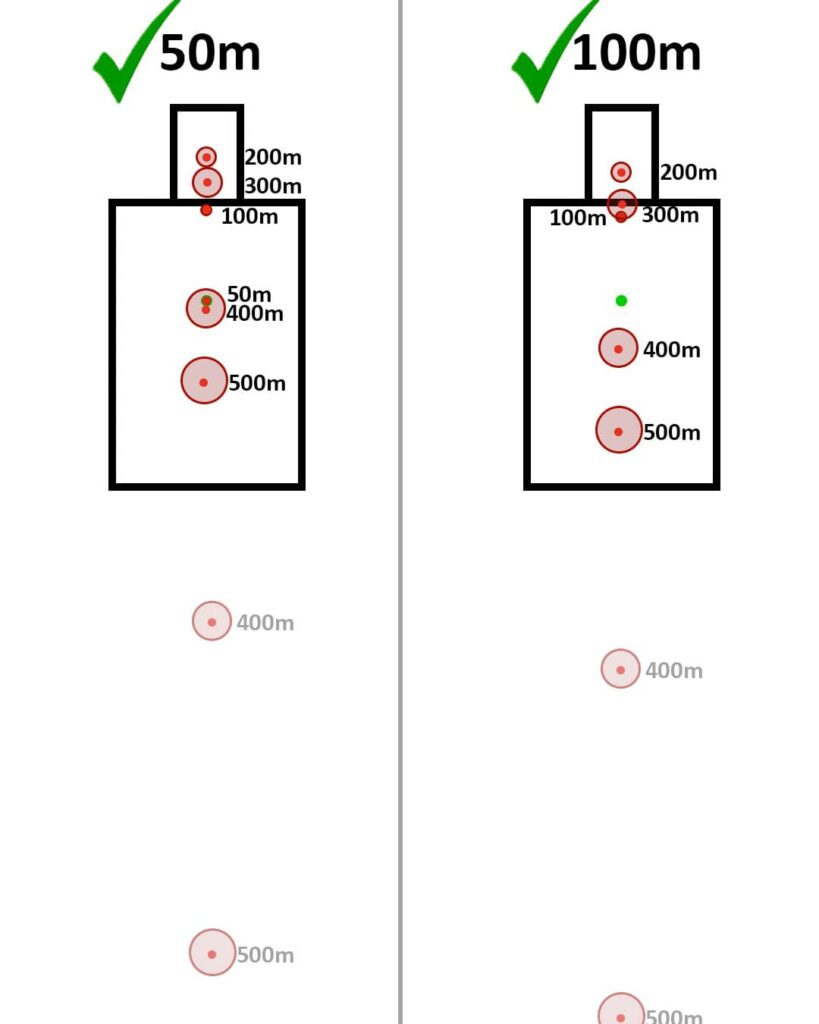
Advantages
Dummy-Proof
• Mount the Alpha TARAC anywhere in front of your primary optic, Aim Center® target to get hits, and hold left or right for movers. If there is a field of view (FOV) of any degree through the Alpha, it is working, so it does not have to be precisely on optic centerline.
Cross-Compatibility
• Use the same Alpha across optics, zeroes, munitions, and weapons; it is neither weapon, barrel length, nor cartridge specific. Interchange components as needed for different firing solutions.* Click here to download Cheat Sheet.
*Lenses for the 1.50″ model and lenses and bases for the 1.98″/2.26″ models are cross-compatible, respectively.
Analog
• The Alpha TARAC is a prismatic, bullet drop compensator, functioning without semiconductors, software, IR emissions, or batteries, a distinct advantage in a long-term conflict. Civilians and the military use 900nm and 1500nm IR beams, respectively, to measure target distance. However, IR beams immediately diverge, increasing in diameter over distance and causing objects like brush, hills, and other natural terrain to be factored within the beam area, not just the target. To increase accuracy, range finders emit a series of IR beams, not just one, allowing onboard software to aggregate one of four pre-programmed interpretations, which varies by model and manufacturer. Thus, readings may yield an incorrect firing solution (use the figure below for reference).
Option 1 – Red | Software focuses on the cluster of measurements closest in range. (The cow is measured, not the man.)
Option 2 – Green | Software focuses on the largest cluster of similar readings. (The tree is measured, not the man.)
Option 3 – Blue | Software focuses on the largest cluster of identical readings. (The car is measured, not the man.)
Option 4 – Purple | Software focuses on the cluster of measurements farthest in range. (The barn is measured, not the man.)
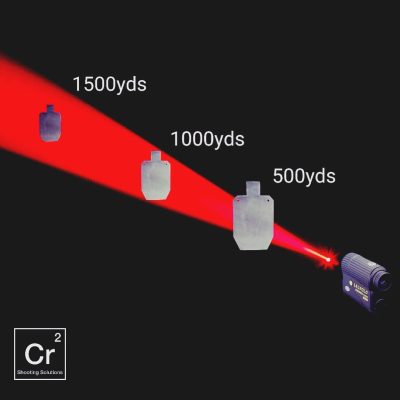
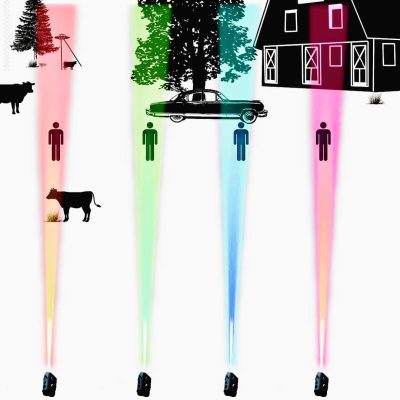
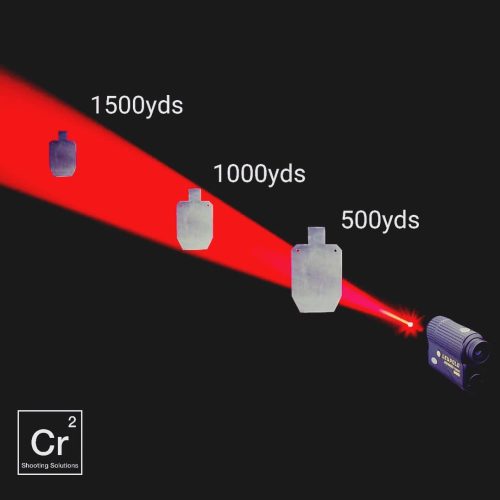
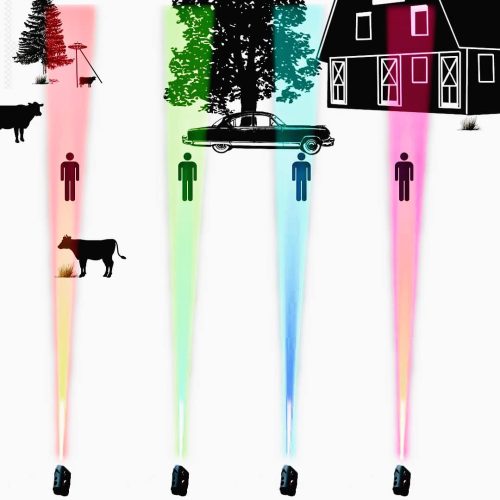
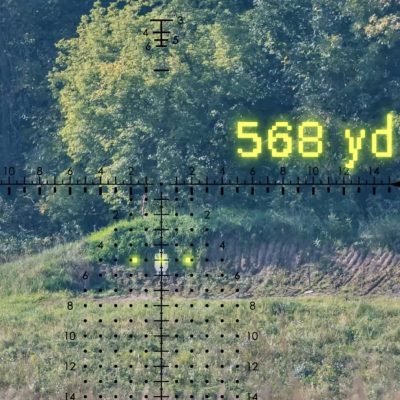
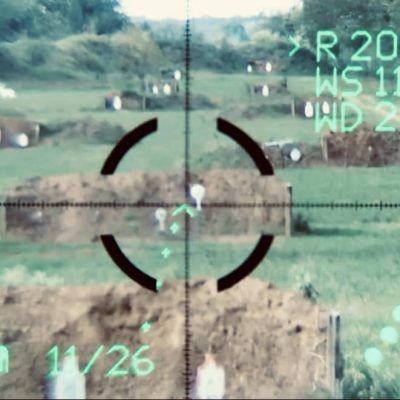
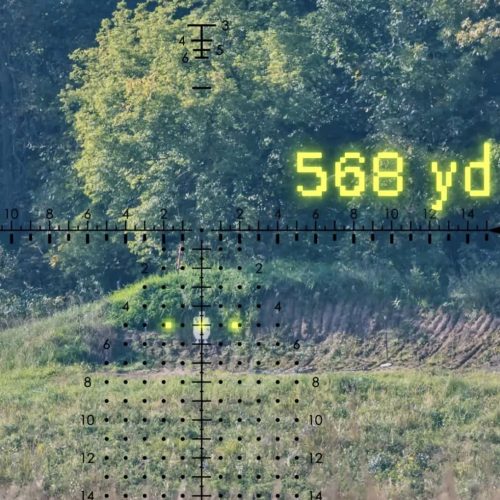
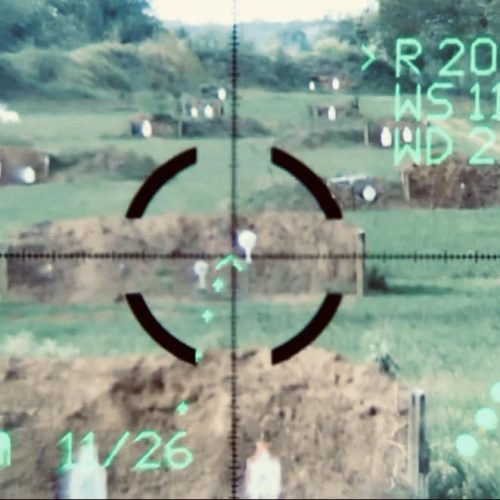
Environmentals and Duress
• Environmental conditions like fog, rain, and snow further exacerbate beam dispersion, increasing random points of reflection, severely impeding the accuracy of the reading. Add adrenaline, heavy breathing, an elevated heart rate, terrain, target reflectivity, etc. will makes it challenging – if not impossible – to acquire an accurate firing solution in combat using active reticle displays or other optics with integrated IR systems. While collimated beams assist to increase accuracy, they also become harder to aim and much easier to detect. It is for these reasons demonstrations often frame a static target with a berm to reduce beam divergence to a near singular value and to minimize shooter / software error, ideal in a controlled setting. Add multiple, moving targets at unknown distances and training and any over reliance on auto calculated solutions are exposed. Since the Alpha TARAC is a prismatic, bullet drop compensator, it works regardless of variables like the end user’s mental state and environmental conditions.
Detection
• Undetectable by passive laser detection systems, the Alpha TARAC rivals devices rooted in complex electronics and software. Laser detection systems are used by various military powers around the globe. Often vehicle or personnel mounted, they are programmed to automatically alert and relay the precise location and direction of IR emanation to other (nearby) forces for counter measures using ATAK or similar apps. Significant funding is causing rapid development in this sector, like InGaAs SWIR, which detects wavelengths as low as 400nm to as high as 2.5μm, encompassing 1064 and 1550nm, the same wavelength(s) used in laser range finders and NV. The Alpha also boasts the option to run a HexCap manufactured by One Hundred Concepts to further reduce reflectively. The HexCap may be run ambidextrously, mounting the Alpha frontwards or backwards.
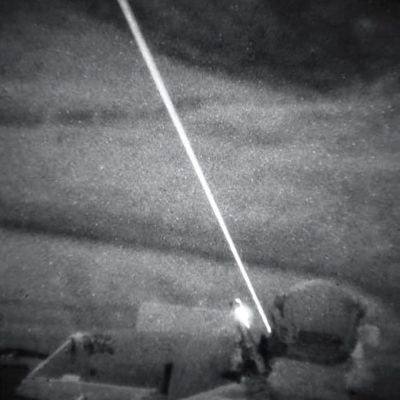
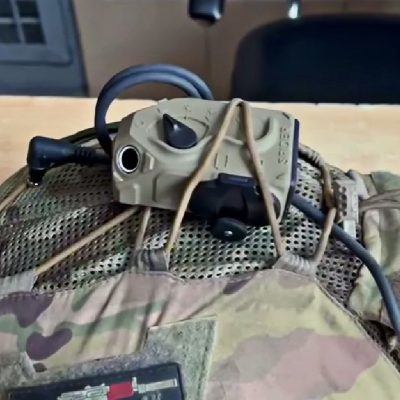
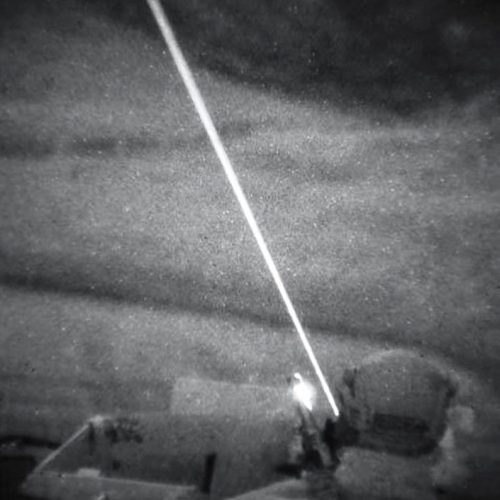
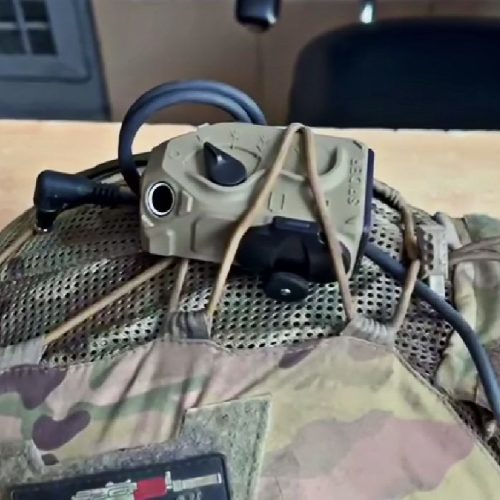
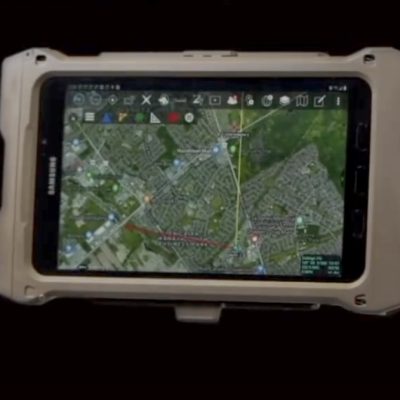
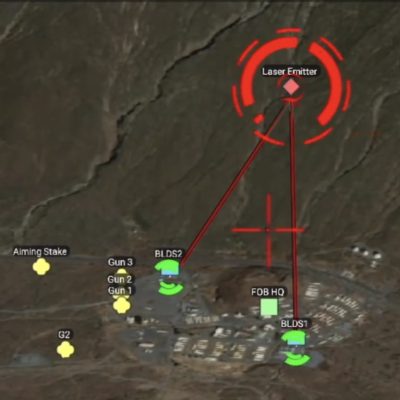
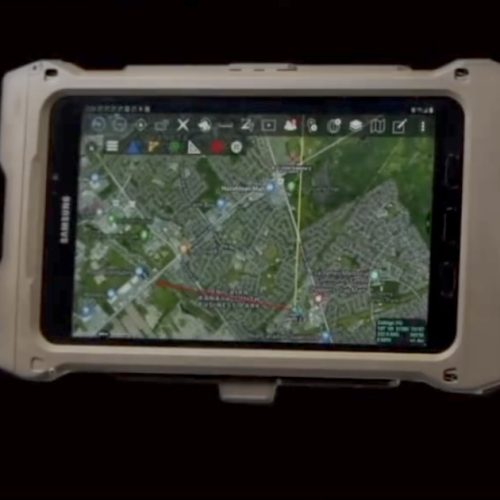
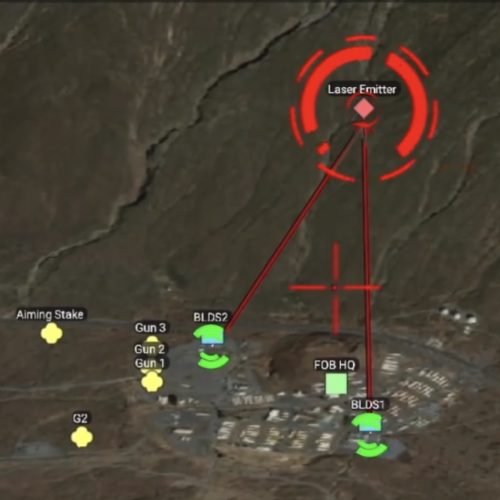
Saturation
• The Alpha TARAC is an inexpensive military solution cross-compatible with any optic, including the millions of serviced holographic and red dots, and weapon system. Click here to download the Cheat Sheet. NATO countries around the globe are prioritizing simplicity, cost, and ease of manufacturing over technological complexity for long-term conflicts and sustainability.
MIL Report
“I tested [the Alpha TARAC] with a Razor 1-6x and EO Tech with 3x magnifier and (….) two new guys with little experience and (…) I gave them a 30s run down on how the prism worked then had them shoot the course of fire with and without the prism. With the prism they hit more than twice as many targets (….) It’s a very simple increase in performance (….) Past 350m I had them hold center with the prism and made hits to 500m” – REDACTED
Compatible Optics
Mix and Match
• Use the same Alpha TARAC across aiming devices; not optic specific:
In front of Alpha
+ Thermals
+ Front iron sight
Behind Alpha
+ Reflex / Red Dot
+ Holographic
+ LPVO
+ ELCAN
+ Night Vision
+ Rear iron sight
MIL Report
“Versatile in nature, the unit can be utlized with multiple optics (regardless of objective lens size) and on any weapons platform affixed with a picatinny rail system. With no additional training (…) the Alpha TARAC can most certainly shape the battlefield in the favor of the shooter.” – REDACTED
Compatible Zeroes
Mix and Match
• Use the same Alpha TARAC with different zeroes; not zero specific.
Ballistically evaluated:
+ 50m (Red dot and holos)
+ 100m (LPVO)
*Click here to download the Cheat Sheet and to calculate MPBR (Recommended) and/or Speed Drop (Advanced).
MIL Report
“The user can have a unit built to a weapon’s point blank zero and, now, that weapon is immeasurably more lethal in the hands of any soldier.” – REDACTED
Compatible Munitions
Mix and Match
• Use the same Alpha TARAC across munitions; not cartridge specific.
*Click here to download the Cheat Sheet.
MIL Report
“The user can have a unit built to a weapon’s point blank zero and, now, that weapon is immeasurably more lethal in the hands of any soldier.” – REDACTED
Compatible Platforms
Mix and Match
• Use the same Alpha TARAC across platforms; neither weapon nor barrel length specific.
Outfit SMG, SBR, carbine, LMG and heavy machine guns.
*Click here to download the Cheat Sheet.
MIL Report
“The ability of the tacomHQ TARAC optic to be utilized by the lowest common denominator support soldier to a highly trained SOCOM operator is universal and its ability to scale between weapon systems and individuals in invaluable. The TARAC [is] an invaluable tool if added to any SOCOM end users weapon systems and armament” – REDACTED
• Click PDF icon or scan the laser engraved QR code to access components, assembly, and ballistics. Alpha prisms are color coordinated to visually assist cross-compatibility with other setups for bullet compensation. Target size, range, and other important information are detailed.
Training
• Save significant time and money not having to learn holdovers as a perishable skill.
5.56, 6.5, and 7.62 — Deploy the Alpha for big targets. Stow the Alpha for small, 10″ targets inside 300yd. Ideal for OSUT and soldiers/infantry with little to no ballistic knowledge. Achieves Marksman-level capability with minimal training. See MIL report IX.
.300 BLK —
+ Subsonic – Deploy
+ Supersonic – Stow or deploy for added range
UTM/SIM (paint) rounds — Deploy to compensate for faster bullet drop. Custom values available upon request.
MIL Report
“We ended up going to an urban village to work some CQB (….) traditionally, when shooting UTM/SIM for force on force training you have a significant hold over when shooting much farther than the room you are in. I decided to try using the Alpha today with paint rounds to see if I could make my CQB distance UTM/SIM hold overs less pronounced. It worked.” – REDACTED
Classes
• Receive exclusive training and insight from top-tier facilities using the Alpha TARAC® in intermediate-range courses (options may vary by company).
MIL Report
“The Alpha Tarac from TACOM HQ is a game changer. While the rules of skill > gear still apply, this is a product that will absolutely increase “combat effectiveness” by simply being added to your kit.” – REDACTED
Limitations
• Using the Alpha TARAC as a bullet drop compensator to make +600-m hits at 1x is doable, but magnification makes it clockwork.
• Use the Alpha at less than 10x since it is optimized for quick hits on one or multiple targets within a specified range. Engagements inside 600m will (likely) prompt one to run a lesser mag for ease of visibility to acquire targets within field of view (FOV). Otherwise, one will be forced to repeatedly demag and remag to engage. Exceeding 10x is likely using a ballistic solution for point of aim – point of impact with time to dial.
Durability
• Mfg — ADM (U.S.A.)
• Finish — MILSPEC black hard anodize (U.S.A.)
• Glass — MILSPEC 5-Arcsec precision wafer (U.S.A.)
• Friction (U.S.A.) —
+ Nitride QPQ
+ 316SS (salt water resilient)
+ Buna TFE/P 80 Duro O-Ring seal
• Electronics — None; ANALOG
• Temperature Range — From -40 to 140°F
MIL Reports
*REDACTED* 13+ years in United States Special Operations Command (USASOC) units. Special Forces Sniper Course level 1 & 2 graduate. Extensive training and operational experience in CQB and long range sniper operations.
The Alpha was utilized for 6 months of operational experience while deployed to the *REDACTED* AOR. Environmental conditions consisted of a mean ambient temperature of 109*F, with extreme wind and dust conditions. The unit was mounted on a M4 10.3″, 14.5″, and 16″ upper receiver groups (URG). The 10.3″ URG optic consisted of an Aimpoint T-2 Micro, 14.5″ 1-6x ELCAN SPECTRE DR, and the 16″ URG utilized a Leupold Optics MK-6 3-18mm scope.
The Alpha TARAC integrated with each URG seamlessly. While this was requested to be built for an M4 shooting 5.56mm, after using the unit after only a few hours, it was evident that it would be useful on any of the weapons systems a USASOC unit has.
The tactical mount makes mounting extremely fast and secure. Put it on in front of the optic and it’s ready to go. That simple, no tools required. Ease of use also saves trainers time to train a young soldier on holdovers. No holdover is necessary. Just flip it up and engage your target.
The Alpha TARAC will increase a unit’s hit probability beyond 300m (Army Standard Qual Range) guaranteeing greater successful target engagements. The absolute best feature about this unit, is the ability to customize the unit for any added bias needed to meet operational requirements. This feature is incredibly useful with untrained snipers or precision rifleman. The user can have a unit built to a weapon’s point blank zero and, now, that weapon is immeasurably more lethal in the hands of any soldier.
*REDACTED* 7+ years in United States Army Special Operations Command (USASOC). Special Forces Advanced Reconnaissance Target Analysis and Exploitation Techniques Course (SFARTAETC) graduate, grad of Special Operations Terminal Attack Controller Course (SOTACC) and, Sensitive Site Exploitation Course. Multiple rotations through *REDACTED* and *REDACTED* AOR. Extensive training and real-world experience in close quarters battle, direct action, and counter terrorism roles. Multiple assignments to USASOC Crisis Response Force units tasked with AOR CT operations.
The Alpha TARAC was utilized during a *TIME REDACTED* months long deployment to the *REDACTED* AOR conducting direct action operations against a myriad of threat networks during both summer and winter months with operational temperatures dropping into the low teens with highs in the upper 90s to low 100s F, at times extreme dust and wind conditions existed.
Alphas were received during initial month in the country. Customer service utilized during the deployment was exclusively email and personal contact through a TACOM HQ military rep. The units supplied were tailored towards individual needs of the warfighter, each optic being custom fit to bullet grain/BC and weapon system alike. The micro CQB variant unit was provided for standard M4 with a 50/200 meter zero with 77 grain 5.56 and gave the weapon a 500m zero.
Once the units arrived in country, the Alpha TARAC was attached to a 14.5 standard SOCOM modified M4A1 with a Leupold LCO optic. The secondary unit was placed upon a FN 240B 7.62 belt fed machine gun utilizing an ELCAN 6X fixed power optic. Both units shipped with a quick reference guide for multiple common Army DODICs.
After a short time, it became increasingly apparent how easy and capable the system was to use scaled across the wide variety of SOCOM weapon systems. The attractiveness of the system is in its simplicity. With the operator simply having to mount the optic in front of their main optic system, it is ready to go. Due to the operational scope and practice of a special operations unit today, simplicity is of paramount importance for warfighter implementation. Most often simplicity boils down to pure effectiveness and lethality with a point and shoot methodology being completely embodied by this weapon optic system. This fact was proven over a six-month period of time with the optic being utilized over varied terrain and distance.
The TARAC provided greater ability for myself and adjacent indigenous/infantry enablers to engage enemy insurgents across distances greater than 300m and within 600m, utilizing point and shoot methodologies rather than complicated holdovers reliant upon range cards or extensive training. The undoubtable reality of the TARAC optic is its ability to effectively and dramatically increase SOCOM units’ lethality and capability at extended ranges, increasing the likelihood of deadly effects upon the enemy.
There was an increased hit probability by both single shot man portable (M4A1) weapon systems as well as belt fed crew served weapons (M240B) as well. The ability of the TACOM HQ TARAC optic to be utilized by the lowest common denominator support soldier to a highly trained SOCOM operator is universal and its ability to scale between weapon systems and individuals in invaluable. The TARAC would be an invaluable tool if added to any SOCOM end users weapon systems and armament.
*RANK REDACTED* USASOC
• “I’ve gotten some testing done (tall target test and some range work) and everything works well (….) We’re sold (….) I tested them with a Razor 1-6x and EOTech with 3x magnifier and it nearly doubled hit probability past 400m. You have a good product line (….) I took two new guys with little experience and used them as my test bed. I gave them a 30sec run down on how the prism worked then had them shoot the course of fire with and without the prism. With the prism they hit more than twice as many targets because it removes their need to actually understand how mils work or how to shoot Kentucky elevation (….) It is a very simple increase in performance. Past 350m I had them just hold center with the prism and made hits to 500m (….) It’s a really good product that allows me to make guys more effective with very minimal training.”
• “We have been running Aimpoint T2 red dots against the Razor 1-6x against the shot clock for short-range drills and balancing it against long-range capability. We have pretty well determined through empirical data that everyone is significantly faster with the red dot at short range and we don’t really give up much at all with the Alpha out to 500m compared to the compromise of using a LVPO and being slower at short range. This whole project has changed a lot about what we thought we knew about what the “best” optical setup is.”
• “Hit probability was overall higher with the Alpha Tarac by about 25%, but beyond 400m it was the difference between hitting and not having a chance. Both optics had a 50/200m zero to make it an apples to apples comparison. Neither guy really knew how to use the Razor’s milliradian reticle so they were swagging holds (….) Using the Alpha Tarac and hold over instructions given before the course of fire started, both guys made hits to 603m.”
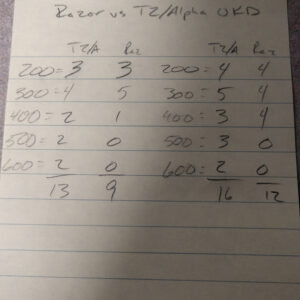
• “I tried something else today because we ended up going to an urban village to work some CQB because winds (….) Traditionally, when shooting UTM/SIM (paint rounds) for force on force training you have a significant hold over when shooting much further than the room you are in. I decided to try using the Alpha today with paint rounds to see if I could make my CQB distance UTM/SIM hold overs less pronounced. It worked. When in a security position, instead of having to hold over the head of a guy at about 50m I was able to hold straight up and shoot. So, I see an additional capability with the Alpha for force-on-force training with UTM/SIM rounds because you can actually just apply normal holds and shoot instead of having to Kentucky elevation shots two to three rooms deep or having to shoot building to building down/across the street.”

*RANK REDACTED* 3RD Ranger Battalion Assaulter
Initially, I didn’t see much use for it [a Alpha on] a carbine, as I knew all my mil holds to 800m with 5.56, 7.62 and WM. I’m someone who hates BDC reticles in ACOGS and Elcans because I could get better hits with holds. I didn’t really see why I’d ever run a Alpha because it’s basically doing the same thing. (Though you’re still holding on a target in the bottom of your field of view with a BDC and not with a Alpha).
I switched to the Alpha on my personal gun about 9 months ago, and that was due to running a 1-6 vortex back to back with and without the Alpha on a UKD range from 25-500m.
I got a decent hit percentage without it, but it took me longer to eyeball the distance. With the Alpha, I just flipped it up when it looked too far and held center mass out to ~500, where I favored high on the target. [The Alpha] Improved my hit probability by about 30% and got me 1st round hits at 400+ (its way more of an obvious difference on someone who doesn’t have dope memorized.. like night and day better). Granted, if I took the time and 12″ drilled the targets, my hits were about the same or slightly better than without the Alpha, but I was going for efficiency of time/total rounds. I then ran the same course with an Aimpoint T2 with a 3x magnifier (with the prism) and actually ended up with my fastest time, mainly due to the ability to switch mag quickly and do center holds without thinking about it.
Its honestly even more useful with thermals. Mainly because, in my experience, when you mag in on a thermal optic, dudes look all Mario Brothers pixelated and your reticle washes out against a bright black and white target image. The ability to hold center takes a lot of the thought process out. The end goal of the optic in general is to take out the guesswork. Honestly, its never going to replace a qualified and proficient marksman. I still don’t technically need a Alpha, I’m just faster with one, so I use it.
“I took my squad out today to shoot them. Had half shoot with and half shoot without to see the difference and it was incredible. The first picture was 10 rounds at 400m with a 11.5 barrel [9 out of 10]. The second was 10 rounds at 475 [7 out of 10]. The guys that shot without the Alpha had roughly 50% less rounds on target just using a normal hold. Keep in mind the guys shooting the Alphas all had red dots with no magnification. I’m incredibly impressed by this thing when I see my private and brand new tan drilling at 500. It’s light (which is huge) and easy. But the thing that sold me the most was being on the line and not in SNOT we can retain our CQB set up with the ability to keep that stand-off and effect targets when able. How we don’t already have this is insane to me, honestly.”
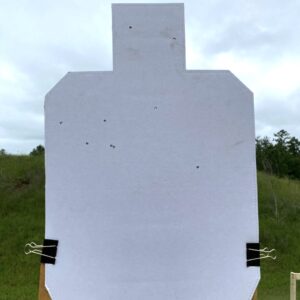
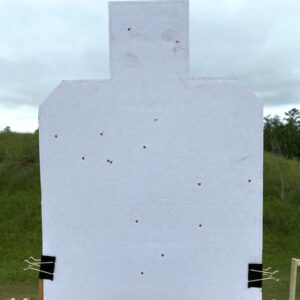
*REDACTED* AFSOC
The Alpha TARAC is designed to enhance a weapons max point-blank range on a 40-inch, E-type targets. With the Alpha TARAC any target exceeding 300 yards, and as far as 600 yards, is easily engageable without holdovers or range estimation. DAGREs would greatly increase hit probability guaranteeing greater successful target engagements in deployed environments. The Alpha TARAC also benefits DAGRES by being able to use it in all weapon platforms for any mission. Also, being light weight, compact, and requires no batteries making it easy to maintain in any environment.
*REDACTED*
“The Alpha Tarac from TACOM HQ is a game changer. While the rules of skill > gear still apply, this is a product that will absolutely increase “combat effectiveness” by simply being added to your kit.”
*REDACTED*
Shooter
18 years USMC
Reconnaissance Marine, Scout Sniper, Combat Marksmanship Coach
10 years LEO, local and federal
6 deployments Iraq/Afghanistan
USPSA and Precision Rifle Competitor
Rifle
Upper: Colt 14.5” 1:7
AMMO: Federal 5.56 64 gr soft point
OPTIC: EOTECH XPS mounted on Unity Tactical FAST
OPTIC 2: TACOM HQ Alpha TARAC 7.5 MOA mounted on Kinetic Development Group Sidelok Universal Riser, short version
Zero Range: 50m
Atmospherics
Temp: 80-95 degrees F (throughout the day)
Baro range: 29.50-30.10
Alt: 500-700 MSL
Wind: 15-22 mph full value R to L
Alpha TARAC selection:
Understanding this technology can be difficult. In simple terms, prism technology provides a manual shift or “hold” in the sight picture by applying a set MOA adjustment. In this case, the unit tested applied a “hold” of 7.5 minutes of angle. The application of this technology, when combined with a red dot optic, works well when using Max Point-Blank holds. Max point-blank is a simplified method of aiming/target engagement by exploiting the maximum trajectory path of a round in flight out to a set distance.
For example, a rifle in 5.56 shooting 77gr HPBT with a MV of 2760 FPS zeroed at 109 yards has a max point blank range of approximately 340 yds. This is determined by establishing the set “vertical spread” trajectory of 18”. What this means is that from 0 yards to 340 yards, the round will not travel more than 18” from point of aim to 340 yards. For practical application purposes, the shooter can hold center mass from 0-340 yards and hit within 18” vertical spread, given the rifle, ammo, and shooter perform their jobs.
Selection of the proper Alpha TARAC is simplified by TACOM HQ via the use of a ballistics table available on the website. For this use, the 7.5 MOA was chosen to match with the above mentioned rifle setup. It should also be noted that the same Alpha TARAC can be used for MULTIPLE rifle and ammunition configurations, including machine guns and various platforms with magnified optics. This really adds value and reduces costs to the end user. Purchasing one item that can fill multiple roles is a fantastic feature.
Mounting:
The rifle used had an EOTECH XPS mounted on a Unity Tactical FAST mount. This is a high optics mount that is being used more and more on rifles. The high nature of this mount serves multiple purposes. To name a few, it allows the shooter to keep his head up, facilitates passive aiming with night vision, and helps raise the optic viewing window above lights, lasers, and other items mounted on the top rail of the rifle (….) The EOTECH reticle was perfectly centered in the window of the Alpha TARAC (….) The Alpha TARAC does NOT require or negatively impact the zero of the primary aiming optic. It mounts in front of it and is ready to go.
Range Performance:
The targets used were standard IPSC size steel, 30” tall x 18.25” wide. I held center on these targets and had first round impacts, and repeated follow on impacts with the above listed ammunition out to 300 yds (….) Wind was full value left to right at a steady 15mph with gusts up to 20 mph (….) At 400 yds (…) I flipped up the Alpha TARAC and held center chest level off the right edge and quickly achieved hits. Moving out to 500 yds, I had the Alpha TARAC up and held high between the face and chest and in space off the right edge to achieve impacts. Without the Alpha TARAC, point of impact (bullet drop) is approximately 45 inches. The alpha TARAC 7.5 MOA adds 37.5” to the sight picture, making the POA/POI difference approximately -7.5”.
Beyond 500 yds without magnification, I had to rely on spotting splash. Impacts were observed by a spotter on a Leupold 12-40 spotting scope. But with the Alpha TARAC, I could see the splash inside the window of the EOTECH. By holding in space and adjusting off of self-observed splash, I was able to make verified impacts with an unmagnified EOTECH on the IPSC steel out to 700 yds.
While this is not practical for a 5.56 “battle rifle”, impacts within the practical distance of the weapon system (out to 500 yds) were simple to achieve the FIRST time using the Alpha TARAC. 0-300 yds, hold center (…) flip up Alpha TARAC and [out to] 500 yds, hold in the neck. Simple.
Application/Employment:
The simplicity in the design is exceptional, especially with the ability to use maximum point blank. Both magnified optics and red dots can be used to effectively employ the concept after some instruction. Max point-blank is very useful in a near peer environment when passive aiming must be done to avoid emitting laser energy that can be detected by enemy sensors. The days of throwing LRF energy in the day and IR energy at night are over.
I also see the value in this device for assaulters who’s primary raid optic is a RDS, but still need to be able to prosecute targets at distance. This could occur during an offset insert to a target area, or defending a position after it is seized. The assaulter can simply attach the alpha TARAC and apply max point-blank holds.
Cost/Benefit:
The Alpha TARAC is relatively inexpensive, and takes very little time to learn. In fact, I did not even re-zero my optic before trying it out. It was a simple mount and shoot process. The benefit of being able to make hits at distance without having to remember holds increases the lethality of the shooter and shortens the kill chain.
Summary:
The Alpha TARAC is a simple, low profile, durable, and practical addition to a weapon system. I would highly recommend its addition to any person who employs a red dot optic past 300 yards. It is simple to use and simple to learn.
*REDACTED* Fort Benning
“Yesterday, I took a squad size sample of OSUT trainees using the tacomHQ Alpha TARAC and I’m beyond impressed. Once they figured out their holds on target, the 400-500 meter targets were successfully engaged within 1-2 rounds with the M4A1 with CCO. This sample size was with trainees with RM scores of 26 to 34 hits on last RM qual. I’m excited to push the report up to the top and submit this SEP request once testing is complete. My next series of tests will be including time/stress and fighting up. I will also do the same during our URM phase (….) It’s dummy proof. I had guys who never shot past 300 meters just flip up the Alpha and put rounds on target from 400-600 like it was nothing (….) I had guys at sniper school missing at 500 meters with a Mark 5 on a M110 (…) Seriously, it’s a simple piece of kit that doesn’t add any real weight to the gun, but gives you a simple way to hold on targets outside of 300.”

Made in the U.S.A.
